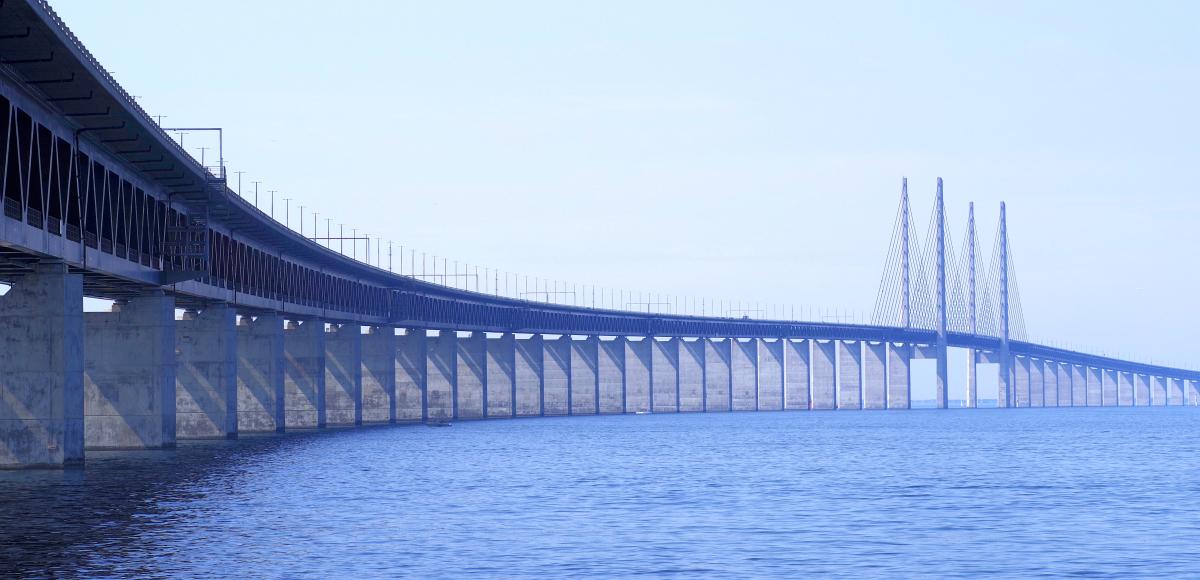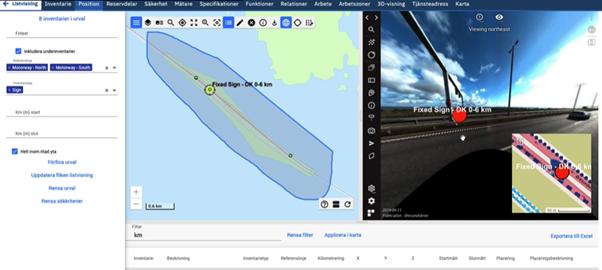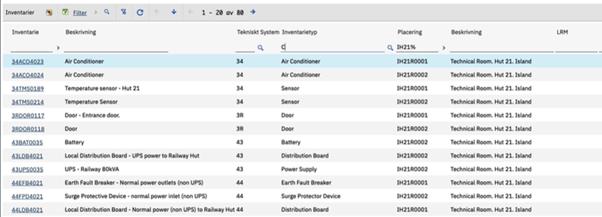
AFRY is contributing to the development of a digital twin of the Öresund Bridge
Planning and maintenance from a distance
Cost-effective operation, less traffic brought to a halt and better safety are three of many advantages that the maintenance team on the Öresund Bridge have with AFRY’s Real Digital Twin - a digital mirroring of the bridge's facilities, installations, and inventories.
In collaboration with the Öresund Bridge Consortium and engineering colleagues at WSP, AFRY has developed a digital twin of the Öresund Bridge. A digital twin is a digital tool that collects and visualizes data from the bridge's many installations and fixtures in real time. The data is displayed in 2D maps in combination with 360-degree scans of a specific area. Via a computer screen, employees can carry out remote maintenance work on the bridge in an efficient, safe, and quick manner.
Can predict wear and tear
AFRY’s team consists of Frank Severinsson and Henrik Gustafsson, who have worked on the Öresund Bridge project since 2018.
"The smart thing about AFRY Real Digital Twin is that many workflows become easier for the bridge's employees. For example, they can scan a specific rail profile from their computer and see if there is any disrepair. A more detailed picture can also show whether there is actual damage. In the long run, this means that wear and tear on equipment and fixtures can be predicted in images and scans," says Henrik Gustafsson, project manager at AFRY.

From list to live on site
The digital mirroring visualizes data on several levels. In the tool’s list view, the maintenance team can get an overview of all facility data - including a description of the type and location of fixtures such as traffic signs and fire escapes. From the list view, a few clicks take the user to a geographical map that contains an overview of the located fixtures. Here, the user is presented with a view so detailed that you can see exactly where the fixtures have been placed in the room. Cameras inside the room allows you to see a live 360-degree view with the location of the fixtures – like a cabinet in the technical room.
"The digital mirroring also allows the users to have a Teams meeting with other technicians where they can get a live view from a given point in the bridge's installation. And let’s say that we have new colleagues who need to be trained in how to access fire escapes in the event of an accident, then they wouldn’t have to visit the site physically," says Henrik Gustafsson.

A data-driven eye opener
AFRY Real Digital Twin is built on a platform that was developed by WSP and the Swedish Traffic Administration. AFRY's engineers then added the software systems Maximo, Orbit and ArcGIS to the platform which resulted in MX360. The functionalities of the tool have been developed by WSP and AFRY in collaboration with the client – Öresundsbro Consortium.
"It started with an ambition to be able to visualize the installations of the bridge in Maximo. When we started working on that in 2018, it was eye-opener to all of us because we could see what other possibilities there were if we could use data and visualizations for the maintenance work on the bridge," says Frank Severinsson, who is responsible for all AFRY's activities in relation to the Maximo software.
Continuous development of the tool
In 2018, the task was simply to collect data from the bridge's roads and train lines – a so-called mobile mapping. Images and data were provided by laser scanners and 360-degree cameras which made the digital tool useful for the maintenance team.
Later, AFRY and WSP improved the functionalities of the tool, among other things by expanding the areas from which data was collected. In addition, the improved version made it possible to visualize buildings from the inside e.g., technical rooms.
Today, the engineers focus more on data quality since more installations and locations are being visualized in the tool. In the second half of 2022, another sub-project has been launched where new scans and data collection from the roads and rails on the bridge are compared with previous scans.
Advantages of a digital mirroring of infrastructure projects
- Employees can carry out remote inspections of facilities and equipment, perform calculations and plan maintenance of the site and its functionalities.
- Collected data indicates if an installation is worn, and preventive maintenance can be initiated. A scan of a road surface can show wear and tear, and repairs can be initiated before possible major damage to the road results in traffic incidents or brings traffic to a halt.
- Fewer visits to the bridge mean better safety and less risk for the employees.
- Fewer visits to the site also result in a reduced climate impact, as CO2-emitting transport to and from the site can be avoided.
- Overall, the digital work tool provides a more cost-effective operation, as the plant's employees become more efficient when they can solve challenges remotely.
